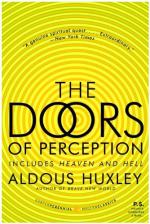
|
| Name: _________________________ | Period: ___________________ |
This test consists of 5 multiple choice questions, 5 short answer questions, and 10 short essay questions.
Multiple Choice Questions
1. What is the difference, according to the author, between the Japanese butcher bird painting and Hardy's thrush?
(a) Each bird is painted in a very different style due to the difference in culture.
(b) There is no difference; they are very similar paintings in terms of their visionary qualities.
(c) The Western bird is surrounded by foliage, while the Eastern bird is not.
(d) The Western bird wants to teach the viewer something, whereas the Eastern bird is content to simply be.
2. Who is the first painter mentioned in Appendix IV?
(a) Velasquez.
(b) Piero.
(c) Khmer.
(d) La Tour.
3. What is striking about the painting of the butcher bird, to which the author refers at the end of Appendix 5?
(a) It has an almost human expression.
(b) It is looking directly at the viewer.
(c) It stands alone with nothing on any side of it.
(d) It is drawn in painstaking detail.
4. What does Carlyle write of the men and women around him?
(a) Their interactions with him were superficial.
(b) They seemed as if they were out to get him.
(c) They were merely figures.
(d) They didn't want to talk to him.
5. What chemical change does the author mention at the end of Appendix 6?
(a) Replacing mescalin and lysergic acid with adrenolutin.
(b) Replacing adrenolutin with mescalin and lysergic acid.
(c) Replacing mescalin with adrenolutin and lysergic acid.
(d) Replacing lysergic acid with adrenolutin and mescalin.
Short Answer Questions
1. Which of La Tour's paintings does the author mention by name at the end of Appendix 4?
2. What group of mentally-ill people does the author write about in Appendix 6?
3. What is the subject of most of La Tour's paintings?
4. What does Carlyle call "an incredible tradition"?
5. A mental state similar to that of schizophrenia can be induced by administering what drug?
Short Essay Questions
1. What does the author say about Vuillard at the beginning of Appendix 5?
2. Of what was Carlyle constantly apprehensive or afraid?
3. According to the author in Appendix 6, how are the doors of Heaven and Hell opened for the living?
4. What comment does the author make at the end of Appendix 4 regarding La Tour's personal character?
5. What does Gericault say about his own artwork, according to the quote in Appendix 7?
6. According to the author, how did La Tour feel about "theatrical effects" in his paintings?
7. What does the author say in Appendix 5 about "Nature at the middle distance"?
8. According to the author, what is unique about "Raft of the Medusa," artistically speaking?
9. To what does the author compare the world inhabited by schizophrenics in Appendix 6?
10. How does the author introduce Georges de La Tour in Appendix 4?
|
This section contains 942 words (approx. 4 pages at 300 words per page) |

|




